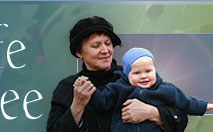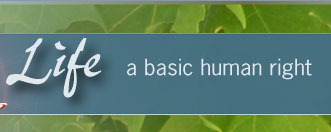 |
|
 |
|
| 1963 |
|
Dame Cicely Saunders introduces "specialized
care for the dying" to US.
|
| 1965 |
|
Florence Wald invites
Saunders to join Yale as visiting faculty |
| 1967 |
|
The term "hospice" is
introduced in England (St. Christopher's hospice) |
| 1967 |
|
 The
first living will is written by the Euthanasia Society
of America, and attorney Luis Kutner (who later founded
Amnesty International). The Euthanasia Education
Council is created the same year. The
first living will is written by the Euthanasia Society
of America, and attorney Luis Kutner (who later founded
Amnesty International). The Euthanasia Education
Council is created the same year.
[Dates for Euthanasia Society of America, and its descendent
organizations, are taken from the Choice in Dying web
site, now archived.] |
| 1968 |
|
An ad hoc committee
of Harvard faculty defines "brain death." |
| 1969 |
|
Kubler-Ross, New Age
spiritualist, produces book: On
Death and Dying |
| 1969 |
|
Hastings
Center is founded in New York by Daniel Callahan and
psychiatrist Willard Gaylin, MD. (For a concise history
of Hastings and bioethics, see What
is Bioethics by bioethicist Dianne Irving,
Ph.D.) |
| 1972 |
|
Kubler-Ross testifies
to Senate on death with dignity |
| 1972 |
|
PVS is defined |
| 1974 |
|
Balfour Mount (Canada)
substitutes the term "palliative care" for the term "hospice." |
| 1976 |
|
May: Karen Ann Quinlan
case decided; she was removed from respirator. (She died
of pneumonia in 1985.) |
| 1980 |
|
 Hemlock
Society is founded in California by Derek Humphry Hemlock
Society is founded in California by Derek Humphry |
| 1983 |
Mar |
President's Commission for the Study of Ethical Problems in Medicine (established by Pres. Carter in 1979) publishes "Deciding to Forego Life-Sustaining Treatment." Alexander Capron, executive director; Joanne Lynn, project director. Both Capron and Lynn were board members of Concern for Dying.
The commission addressed living wills, "natural death acts," benefits of durable power of attorney. The commission also recommended model bill to establish hospital ethics committees. |
| 1984 |
|
Colorado Governor Richard Lamm, addressing the Colorado
Health Lawyers Association, declares that elderly people
have a "duty to die."
"Like leaves which fall
off a tree forming the humus in which other plants
can grow, we've got a duty to die and get out of the
way with all of our machines and artificial hearts,
so that our kids can build a reasonable life."
|
| 1984 |
Apr |
 New England Journal of Medicine publishes "The Physician's Responsibility toward Hopelessly Ill Patients." ( 310, no. 15 pp. 955-9). The article was the result of a conference at the Countway Library in Boston, convened by the Society for the Right to Die. The article's ten authors were: New England Journal of Medicine publishes "The Physician's Responsibility toward Hopelessly Ill Patients." ( 310, no. 15 pp. 955-9). The article was the result of a conference at the Countway Library in Boston, convened by the Society for the Right to Die. The article's ten authors were:
- Sidney H. Wanzer, M.D., Department of Medicine, Emerson Hospital, Concord, Massachusetts.
- S. James Adelstein, M.D., Professor of Radiology and Dean for Academic Programs, Harvard Medical School.
- Ronald E. Cranford, M.D., Director, Neurological Intensive Care Unit, Hennepin County Medical Center, Minneapolis, and Chairman, Ethics Committee, American Academy of Neurology.
- Daniel D. Federman, M.D., Professor of Medicine, Harvard Medical School, and past president, American College of Physicians.
- Edward Hook, M.D., Chairman, Department of Medicine, University of Virginia Medical Center, Charlottesville.
- Charles G. Moertel, M.D., Chairman, Department of Oncology, Mayo Clinic and Medical School, Rochester, Minnesota.
- Peter Safar, M.D., Director, Resuscitation Research Center, University of Pittsburgh Medical School.
- Alan Stone, M.D., Professor of Law and Psychiatry, Harvard Law School.
- Helen B. Taussig, M.D., Professor Emeritus of Pediatrics, Johns Hopkins University School of Medicine.
- Jan van Eys, M.D., Department of Pediatrics, University of Texas System Cancer Center and School of Medicine.
In 1989 NEJM would publish a sequel, titled The Physician's Responsibility toward Hopelessly Ill Patients: A Second Look, with many of the same authors. The 1989 article would be a defense of physician assisted suicide. (see March, 1989) |
| 1984-85 |
|
Midwest Bioethics
Center founded by bioethicist Karen Ritchie,
M.D. (former Chief of Psychiatry at U. Texas-MD Anderson;
bioethics degree from Kennedy Institute of Ethics at Georgetown);
Hans W. Uffelman, Ph.D. (bioethicist at Univ. of Missouri-Kansas City); and Mary Beth Blake, JD (attorney for University of Kansas Medical Center). Daniel Callahan at the Hastings Center provided guidance. |
| 1984 |
Sep |
National Conference of Commissioners on Uniform State Laws drafts a ''Right to Decline Life-Sustaining Procedures Act." The New York Times publishes an AP wire with the headline "The 'Living Will' Gains Acceptance" -- a puff piece on Luis Kutner and the Society for the Right to Die. |
| 1985 |
|
RWJF
calls meeting to discuss dying in America:
"Fueled by a series of personal experiences that
affected the leadership of the RWJF, a concern arose
. . . that elderly, fatally ill persons were likely
to be vigorously treated . . . at great financial cost
and suffering, even if their families objected." --
Joanne Lynn, MD; Unexpected
Returns: Insights from SUPPORT
The meeting led to recommendations from two researchers:
- Joanne Lynn, MD, a Kornfeld Scholar at Dartmouth
University (later moved to George Washington Univ.).
Kornfeld Foundation supports research for "the right
of the individual to choose the time and manner of
his or her death, without undue interference by doctors,
hospitals, courts, churches, families or society."
Dr. Lynn has won at least $6 million in funding from
RWJF, approximately $127,000 from Fan Fox & Leslie
R. Samuels Foundation for work at RAND, and a grant
from Soros/PDIA for textbook reform.
Dr. Lynn is a proponent of withdrawal of nutrition
and hydration. See, for example, the following from Handbook
for Mortals, co-authored by Dr. Lynn:
How do people die who choose
not to be fed artificially? What evidence we have
indicates that they do not die more quickly, and
that they do not feel thirsty or hungry. Their dying
without tube feeding, though, tends to have less
struggling with restraints .
. . . Persons with dementia die from an array of
different complications, but mostly these are somewhat
treatable. Yet, the treatments are frightening,
even if only because they may require that the person
leave familiar surroundings. And the life saved,
at least at the end, seems so limited that it is
often not clear exactly what should be included
in "good care."
. . . The courts have ruled, over and over, that
using artificial nutrition or hydration is a treatment
decision just like chemotherapy or surgery, and
that families and doctors can choose to use or to
forgo this kind of treatment.
- William Knaus, MD at George Washington
University. After a year of internship in the US,
he was sent by US Information Agency to work in the
Soviet Union for a number of years. His book, Inside
Russian Medicine, was published in 1981 by
Everest House. He wrote (p.14): "There is no single
right answer to the challenge of providing medical
care. The Soviet Union has chosen a totally government-controlled
system, an approach fundamentally unlike our own mixture
of private and public services." Dr. Knaus went on
to found a new department within School of Medicine
at The University of Virginia: the Department of Health
Evaluation Sciences. Dr. Knaus also developed a "prognostic
scoring system for critically ill hospitalized
patients: APACHE (Acute Physiology, Age, Chronic Health
Evaluation).
[Next: Jump to next page — SUPPORT research
is launched in 1989] |
| 1987 |
|
American Health Decisions (AHD) is founded.
It is a "civic bioethics initiative" of the Hastings
Center. This "health decisions movement" was the
pseudo-grass-roots movement upon which the Midwest Bioethics
Center based their Community-State Partnerships end-of-life
coalitions. AHD's John Stanley (of Wisconsin Health Decisions; see Appleton
Consensus, below), would be prominent in the second Last Acts Leadership
Conference. Michael Garland and Ralph
Crawshaw (Oregon Health Decisions; founded 1982-3)
would be featured in the first Community-State
Partnership policy brief, because Oregon Health
Decisions provided a model for C-SP. Oregon
Health Decisions (OHD*) "carefully designs
community meetings to help citizens identify values."
* "OHD" is also a commonly
used abbreviation for Oregon Health Department. However,
in the present website and timeline, we will refer to
OHD as Oregon Health Decisions, following the lead of
literature from the Midwest Bioethics Center (Center
for Practical Bioethics). |
| 1987 |
|
In 1987, a conference
was held in preparation for the Appleton Consensus conference.
The actual Consensus conference would be held in 1988.
Two concerns came from this 1987 conference: "1)
concerns regarding decisions to forgo medical treatment,
including life-prolonging treatment, precipitated by autonomous
requests by patients or their surrogates, and 2) concerns
regarding decisions to forgo medical treatment as a result
of pressures due to scarcity." (Next: May,
1988) |
| 1987 |
|
Great Britain recognizes palliative care as a medical specialty, and describes
palliative medicine as the "study and management of patients
with active, aggressive, far-advanced disease for which
prognosis is limited and the focus of care is quality
of life." |
| 1987 |
|
Decisions
Near the End of Life -- medical education program
founded by Bruce Jennings (Hastings Center) and Mildred
Solomon (Center for Applied Ethics and Professional Practice
at the Education Development Center). Funded initially
by Kellogg Foundation. Soros's Open Society Institute
sponsored projects in 1996-97. |
| 1987 |
|
Guidelines
on the Termination of Life-Sustaining Treatment and the
Care of the Dying
a report by the Hastings Center. Briarcliff
Manor, NY: The Center, copyright 1987.
xii, 159 p.; 28 cm. Bruce Jennings; Bernard Lo. |
| 1987 |
|
Donum
vitae (The Gift of Life) -- Vatican provides instruction
on respect for human life. |
| 1988 |
May |
Lawrence
University Program in Biomedical Ethics (Appleton, Wisconson)
invited representatives from ten countries to create
"international guidelines for treatment abatement procedures."
Joanne Lynn (SUPPORT)
was one of five writers on the drafting committee.
Other participants included: Pieter V. Admiraal,
M.D., Ph.D. (euthanasia advocate); Robert Arnold, MD
(2005 president of AAHPM); Ronald Cranford, MD; Howard
Brody, MD; Stuart Youngner, MD; Susan Wolf, JD (Hastings
Center); John J. Paris, S.J., Ph.D., Ph.L; John Stanley,
PhD.
This second conference discussed the
two concerns that arose from the 1987 conference (see
above). A preliminary draft of Appleton
Consensus: Suggested
International Guidelines for Decisions to Forgo Medical
Treatment was drafted in
1988. The document was revised, and was finally
published in 1989; first in Denmark, then in the US.
Professor John Stanley's "study edition"
of the 1988
Appleton Consensus statement is available at the
Lawrence University web site, and includes commentary
from conference members. The final
edition was published in the September 1992 edition
of The Journal of Medical Ethics (Volume 18:
Supplement, pp. 1-22).
Four "prima facie moral values
or principles" of bioethics predicated the discussion:
autonomy; non-maleficence (avoid harm); beneficence
(do good); justice. We have provided a
few samples from the final version, and have underscored
some recurring themes. There is a "conscience
clause," but in this case the conscientious objector
would be the physician who objects to requests to continue life-prolonging treatment. Part II addresses
"Active Euthanasia:
"Intervention with the primary
intention of causing death (as distinguished from
forgoing treatment that is deemed inappropriate) has
no place in the treatment of permanently incapacitated
patients. However, vigorous treatment to relieve pain
and suffering may well be justified, even if these
interventions lead to an earlier death."
Funding sources included: The
Novus Health Group, the Appleton Medical Center Foundation
Inc; The Raymond Carlson Trust; St. Elizabeth Hospital
(Ministry Health Care, Milwaukee, sponsored by the Sisters
of the Sorrowful Mother); the Theda Clark Regional Medical
Center; the Wisconsin Humanities Committee; The Henry
J. Kaiser Family Foundation (Menlo Park, California);
The Upjohn Company; the CIBA Pharmaceutical Company;
Medtronic, Inc. (makes pacemakers); Lawrence University;
the British Medical Association; the University of Leiden
Medical School Programme in Medical Ethics, and The
Madsen Foundation (Copenhagen, Denmark).
|
| 1988 |
Jun |
Academy of Hospice Physicians is launched at an International
Hospice Institute meeting in Granby, Colorado.
AHP would become American Academy of Hospice
and Palliative Medicine (AAHPM) in 1996.
AAHPM's web site notes: "The Academy [of Hospice
Physicians] was the first physicians' organization in
the country to state publicly its position on what was
to become one of the most widely discussed issues of
the decade." The site does not specify what
the 1992 position was, but notes that it was revised
in 1997 "to respond to the U.S. Supreme Court's decision
on PAS." The 1997 statement was neutral on PAS,
but offered guidelines for consideration in case the
states decide to legalize PAS. (Next: June,
1997)
|
| |
|
[back] [next] |
| |
|
Updated
on
September 22, 2009 7:16
Unpublished work © Copyright 2004-2009 I. Whitlock. |
|
|
 |







